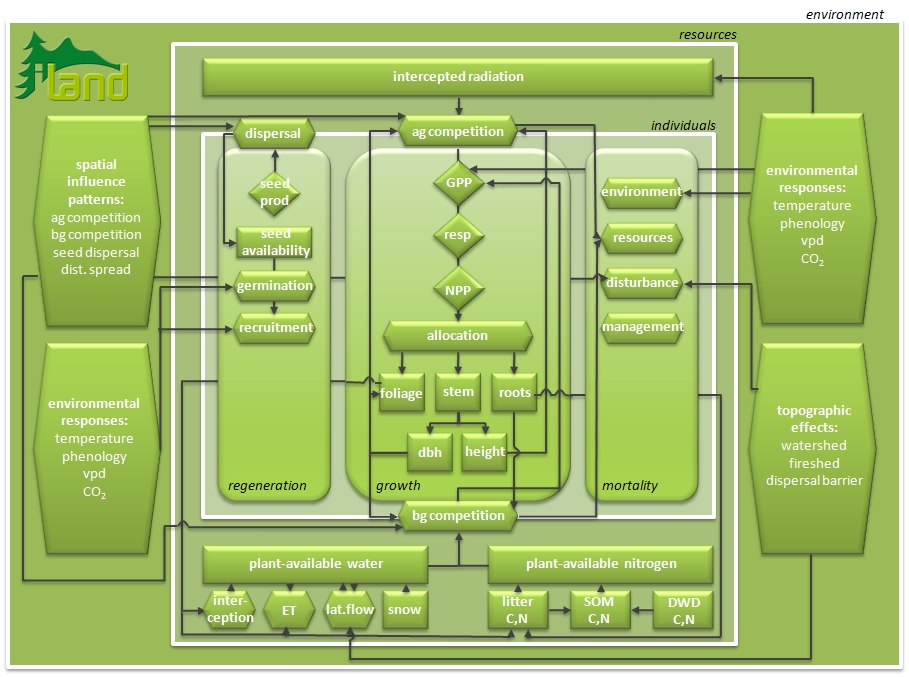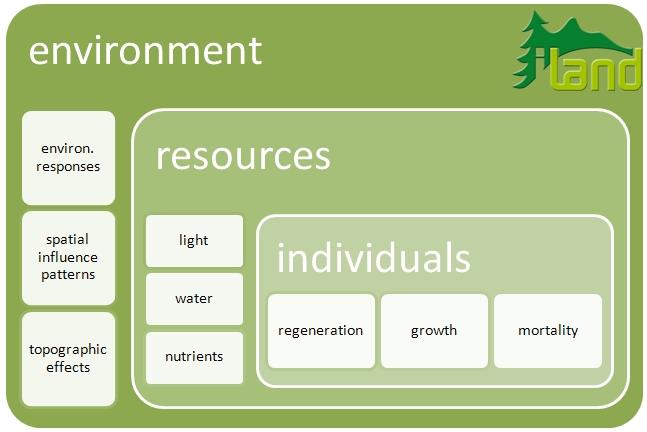Note that this page is part of a collection of iLand history pages and does not necessarily represent the current state of model development!
Core principles
Core principles in the design and development of iLand are:
iLand aims at predictive capacity for complex adaptive systems (CAS)
- key aspects will be modeled as emerging properties of the model
- the importance of interactions at various levels for systems dynamics is explicitly accounted for
iLand development is explicitly driven by (a) research question(s)
- the intended domain of application is given by the cornerstones climate change – disturbances – ecosystem management
- process and complexity requirements are related to the models CAS abilities and intended domain of application
iLand is an extension of previous and ongoing activities
- the work under the project does not re-invent the wheel but rather brings „wheels“ together
- project development is strongly linked to existing tools (LANDIS-II, PICUS) and ongoing research projects
iLand is open
- process interfaces will be designed for easy adaptation and extension
- code will be freely available under the premise of reserved intellectual property rights
- a comprehensive documentation will be provided
Model hierarchy and structure
Processes in iLand operate on three hierarchical levels:
- environment: the level of homogeneous climate and topography (~ tens to hundreds of hectares),
- resources: the level of above- and belowground resource dynamics, influenced by environmental factors and aggregated tree level structure (~ a hectare)
- individuals: the level of individual tree dynamics, affected by the environment and competing for resources

boxes= state variables; rhombs= flow variables; hexagon= process; arrows= influence, information flow
